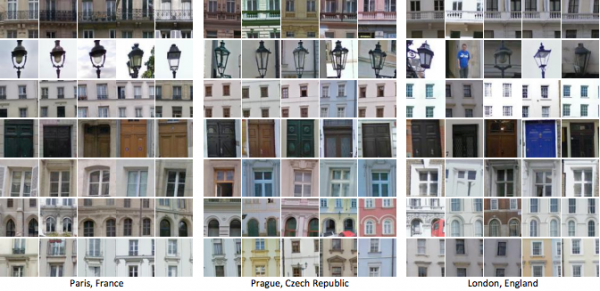No two cities are exactly the same, but some enjoy distinct looks that makes them unmistakable. Think of Parisian balconies with cast-iron banisters, chimneyed townhouses lining the streets of London, or the water towers and fire escapes of New York. Small quirks like these can add up to make a city instantly familiar to anyone in the world.
With this in mind, researchers at Carnegie Mellon University have created a software program to determine exactly which features give certain cities their unique architectural character.
Using everyone’s favorite vicarious vacation dream machine, Google Street View, the researchers developed an algorithm that detects elements, such as a window, column or balcony, that are both distinct and occur with regularity inside a city. As explained in an accompanying video, this disqualifies singular landmarks such as the Eiffel Tower, whose iron angles are distinct but don’t occur anywhere else in Paris. It also allows the program to ignore aspects like blank walls, which can be frequent but dull.
After culling some 40,000 images and noting more than 250 million features in a dozen well-photographed cities, the researchers compiled a database that allows them to pick up on patterns that form a city’s architectural fabric. Want to know how those ovular lampposts figured into your mother’s obsession with Paris? Now there’s a resource for that.
The database also gives insight into the common features shared by different cities and countries, demonstrating cultural crossovers. The video gives the example of similar cast-iron balcony railings found in Paris, Milan and Barcelona, as opposed to stone railings found in Prague and London.
Over at Slate, Will Oremus points out that the software struggled to distinguish U.S. cities, which may speak to architectural hegemony or how most of our built environment sprung up in the age of the automobile. However, that doesn’t leave us completely anonymous: San Francisco has its bay windows and New York its fire escapes. They’re not included in the report, but red-shingled Los Angeles roofs, Chicago skyscrapers and Santa Fe’s adobe houses also come to mind.
Check out the video below to hear more about the process.


